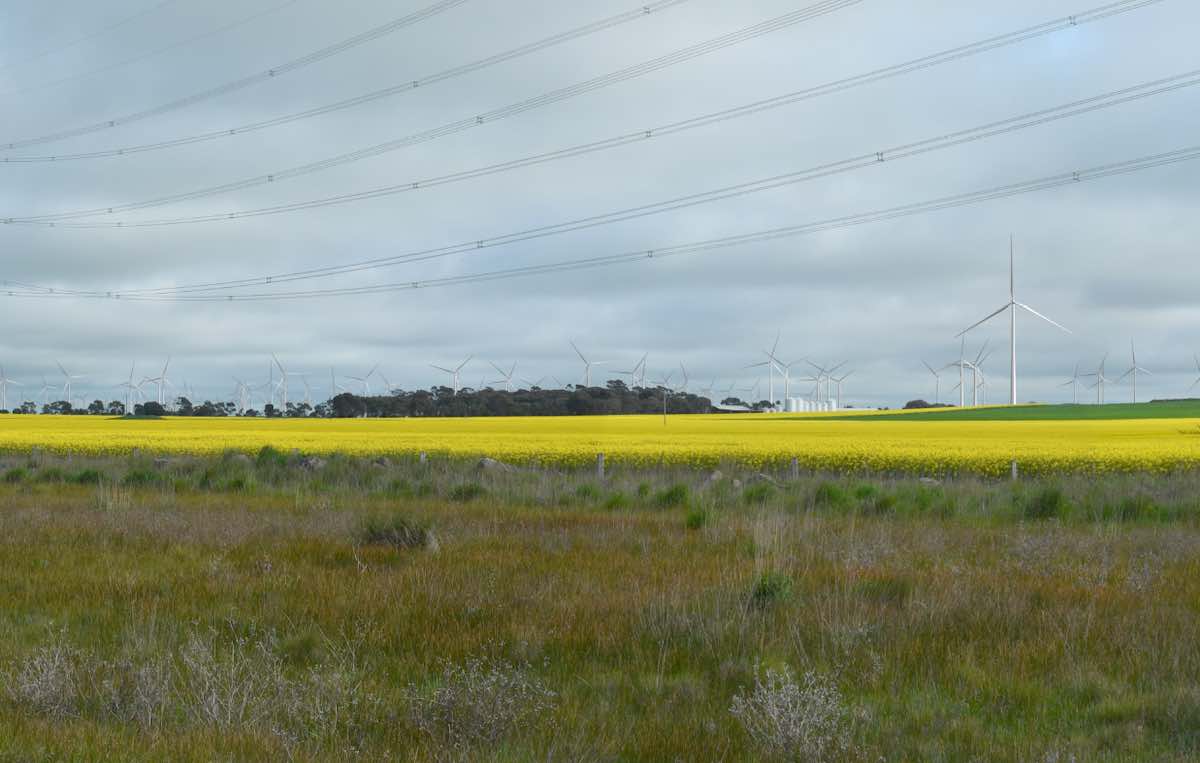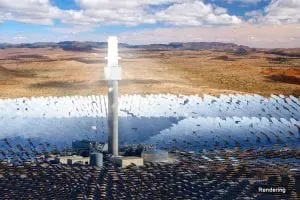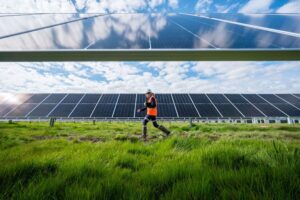Renewables developer WestWind Energy is planning a 100km transmission line through the central west of Victoria, and in doing so challenging ideas of how best to build new infrastructure to connect and transmit renewables and who is best to build it.
The Wimmera Renewable Energy Solutions (WiRES) project, which also proposes a 1 gigawatt (GW) battery at the Warracknabeal end of the 220kV line, promises to connect up to 4 GW of renewables to the grid at Bulgana.
The company says the project would deliver green energy to meet more than 20% of Victoria’s total electricity demand.
WestWind project director Michael Jones says that for a private developer to build its own transmission line at this scale is unusual, but not unheard of.
“The core purpose is to connect projects. It’s not completely unusual that a developer would do a transmission line and the scale is not unusual, but we happen to be in a patch where it’s very visible,” he told RenewEconomy.
Transmission lines have been a lightning rod for regional landowners for some years, with grid companies fumbling through their interactions with communities to the extent that new standards are being developed to govern future rules of engagement.
In Victoria, the state government took over transmission planning from the Australian Energy Market Operator (AEMO) in September last year after the already delayed push for new grid projects hit a wall of fierce resistance from some local communities, with some energy analysts also divided over the proposed projects.
The most contentious project being developed in Victoria is the Victoria to New South Wales Interconnector West, or VNI West, considered by AEMO as a vital new link between the two states that promises to unlock up gigawatts of new renewable generation capacity.
The current preferred path for the Victorian side of VNI West, Option 5A, proposes putting a 500 kilovolt (kV) double-circuit overhead transmission line connecting Western Renewables Link (WRL) at Bulgana with South Australia at Dinawan via a new terminal station near Kerang, and crossing the Murray River north of Kerang.
AEMO has admitted that it could have done better on some of its community consultations, and that process is now being handed to VicGrid, already responsible for the development of renewable energy zones in the state state.
But VicGrid still faces a tough job winning back support for the proposed $3.3 billion transmission link, which has attracted criticism from landowners and local councils over visual and environmental impacts and the fate of endangered species.
It has also divided experts over whether it offers best value for money and the best support for renewables in the state.
Westwind, like other solar and wind developers, has built transmission lines before, such as the 60km connection for the Mt Mercer and Moorabool wind farms. Others include lines to connect the wind farms Stockyard Hill, Macarthur, Bald Hills and Salt Creek with the grid. Jones says some of those are as long as 90km.
Jones says one of WestWind’s biggest advantages in pursuing a project like this could lie in its well established and highly experienced community engagement team.
The WiRES project would also use smaller-scale transmission towers and accommodate more renewables than the controversial VNI West project.
“In an increasingly distributed generation landscape there will be opportunities where developers will be well placed to do this kind of thing,” he says.
“We’re going to align wires to the state compensation framework for landholders, the statutory up-front payment plus the voluntary $8,000 per km per year for 25 years as well.
“And then we’ve devised our own neighbour benefit scheme, so people who live within 1km of the project who have a liveable dwelling will receive basically free green electricity for 25 years. That kind of offer resonates with the project.”
The actual route is yet to be decided as negotiations to secure agreements with landowners have only just begun.
Just add batteries
The other idea WestWind is incorporating is a virtual transmission line, where it will use the 1GW battery to smooth out the amount of generation being sent into the grid.
“It sounds really sci-fi but just means you’re capturing electrons when the farm is at peak capacity and transmitting them later,” Jones says.
The 850 MW/1680 MWh Waratah Super Battery at the Eraring coal-fired power station is also specifically designed as a “virtual transmission” solution.
It will unlock “latent capacity in the existing transmission system, allowing electricity consumers in the Sydney, Newcastle, Wollongong demand centres to access more energy from existing generators”, according to the NSW government’s EnergyCo
Renewables developers are forging ahead with the concept, when the Australian Energy Market Operator (AEMO) is still mulling over how virtual transmission lines might be able to augment the grid, as per its Transmission Expansion Options Report in September last year.
Battery-based virtual transmission lines still weren’t a possibility because of a lack of regulatory framework to support using them, said Jacobs APAC substations technical director Lara Kruk at the Wind Industry Summit in May last year.
“If we allow the stacking of multiple revenues, that is key to improving the business case for storage. Potentially this approach could actually see multiple stakeholders jointly involved in the management of the battery,” she said.










